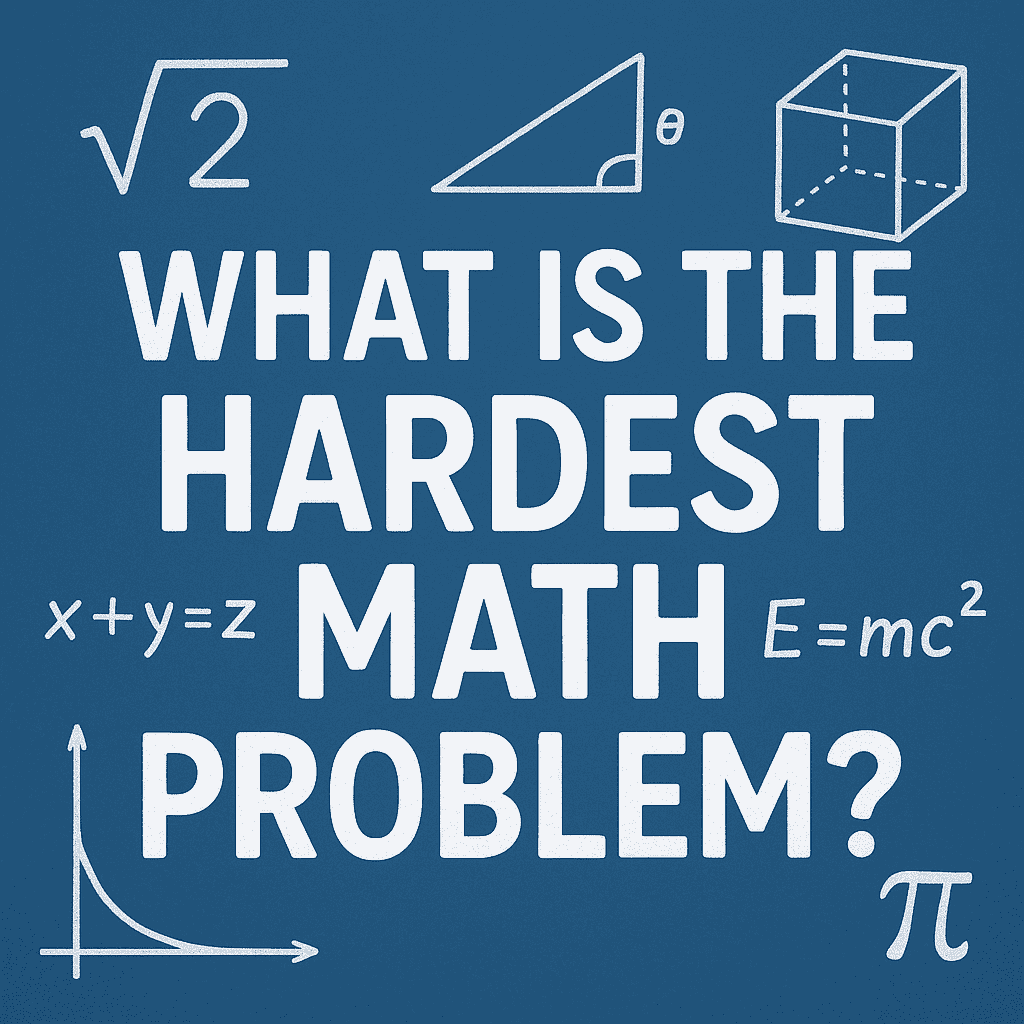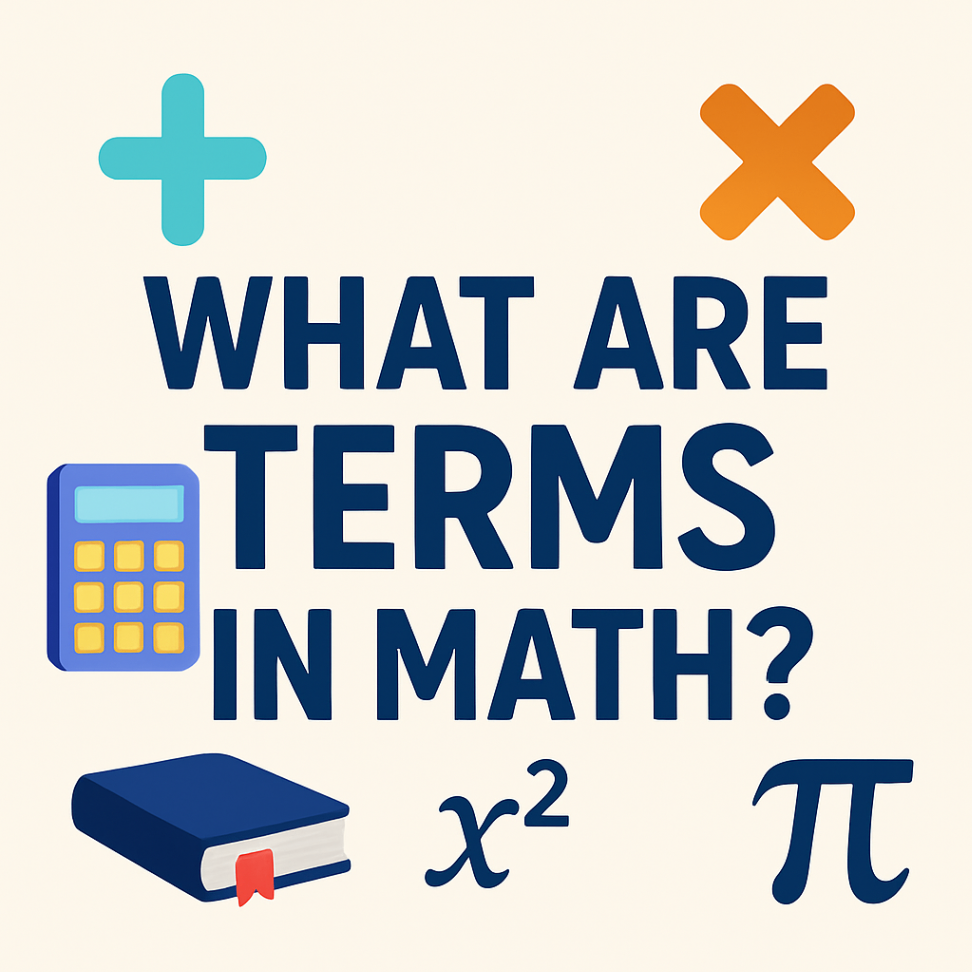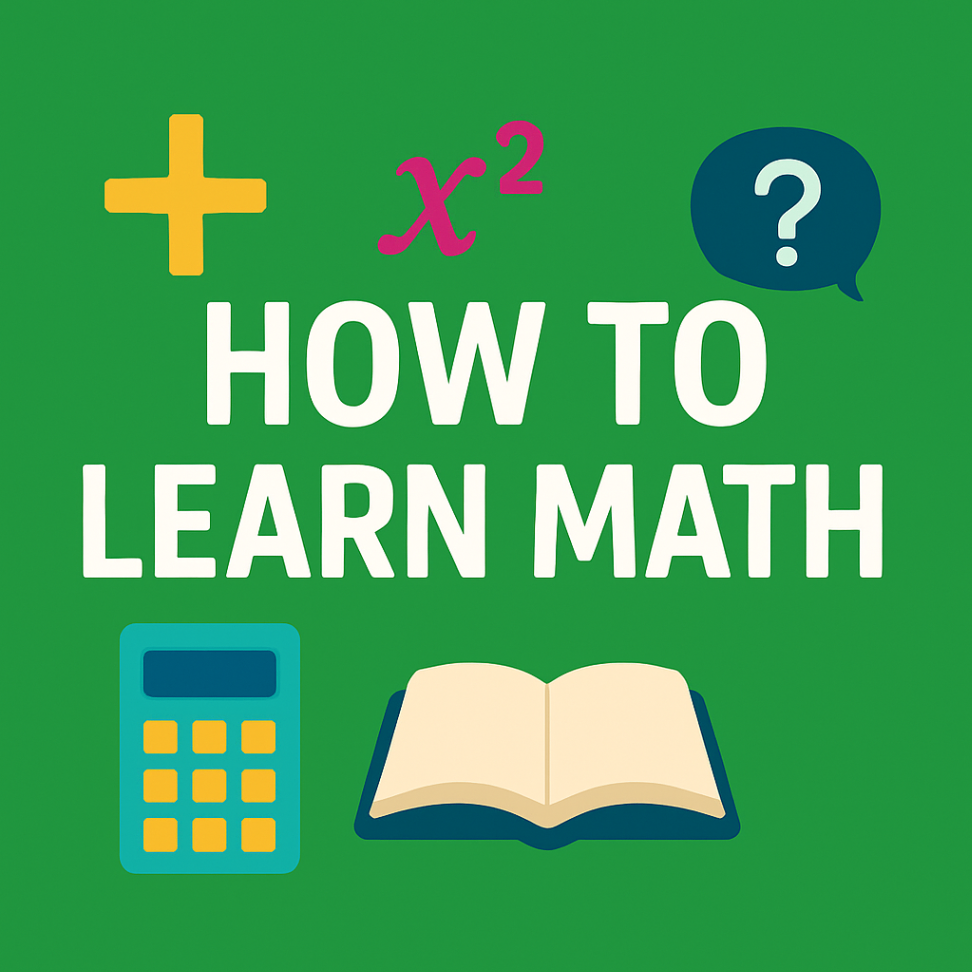Table of contents
- Understanding Mathematical Problem Difficulty: Categories of Challenge
- The Millennium Prize Problems: Mathematics' Greatest Challenges
- Why the Riemann Hypothesis Matters
- Historical Perspectives: Mathematics' Greatest Challenges Through Time
- Modern Mathematical Triumphs: Recently Solved Complex Problems
- Today's Mathematical Mysteries: Current Unsolved Challenges
- Computational Challenges: When Computers Meet Their Match
- Modern Approaches to Ancient Problems
- The Role of Technology in Mathematical Discovery
- The Psychology of Mathematical Problem Solving
- Why Some Problems Remain Unsolved
- The Social Impact of Mathematical Challenges
- Educational Value of Impossible Problems
- The Future of Mathematical Problem Solving
- Collaboration in the Digital Age
Have you ever wondered what is the hardest math problem that has stumped mathematicians for centuries? From ancient puzzles to modern conjectures that offer million-dollar prizes, the world of mathematics is filled with problems so complex they continue to challenge the brightest minds on Earth.
What is the hardest math problem in the world isn't just one single equation – it's a collection of mathematical mysteries that have resisted solutions despite decades or even centuries of intense study. Some offer fame and fortune to those who can crack them, while others represent fundamental questions about the nature of numbers, space, and logic itself.
Understanding Mathematical Problem Difficulty: Categories of Challenge
When mathematicians discuss what is the hardest math problem, they typically consider several factors: the complexity of the mathematics involved, how long the problem has remained unsolved, and its significance to mathematical understanding. Modern tools like advanced AI Math Solver systems can tackle many complex calculations, but these ultimate challenges require human insight, creativity, and mathematical intuition that goes far beyond computational power.
The difficulty of mathematical problems exists on multiple levels. Some problems are computationally hard but conceptually simple, while others involve such abstract concepts that even stating them clearly requires years of mathematical training.
The Millennium Prize Problems: Mathematics' Greatest Challenges
The Clay Mathematics Institute has identified seven problems as the most important unsolved questions in mathematics, each carrying a $1 million prize. These represent what is the most hardest math problem in the world according to leading mathematicians.
History's Most Notorious Challenge: The Riemann Hypothesis
Most mathematicians would agree that what is the hardest math problem in history is the Riemann Hypothesis. Proposed by German mathematician Bernhard Riemann in 1859, this problem deals with the distribution of prime numbers and has profound implications for all of mathematics.
The Riemann Hypothesis asks about the behavior of the Riemann zeta function, specifically where this function equals zero. The official statement is: "Every nontrivial zero of the Riemann zeta function has real part 1/2." While this might sound abstract, the hypothesis connects to fundamental questions about prime numbers that have fascinated mathematicians since ancient times.
Understanding the foundational concepts that lead to such complex problems begins with mastering basic mathematical terminology. Concepts like what are terms in math form the building blocks for the algebraic expressions and equations that underpin these advanced mathematical challenges.
Why the Riemann Hypothesis Matters
What is the hardest math problem to solve often depends on its implications for other areas of mathematics. The Riemann Hypothesis is connected to hundreds of other mathematical results. If proven true, it would unlock an avalanche of further progress in number theory and analysis. If proven false, it would revolutionize our understanding of prime numbers.
Mathematicians have verified the hypothesis for trillions of cases, but a general proof remains elusive. The problem has inspired new mathematical techniques and continues to drive innovation in mathematical research.
Historical Perspectives: Mathematics' Greatest Challenges Through Time
What is the hardest math problem ever has changed throughout history as problems get solved and new challenges emerge. Fermat's Last Theorem, once considered impossible, was finally proven by Andrew Wiles in 1994 after 358 years of failed attempts.
Fermat's Last Theorem: A Former Champion
For over three centuries, what is the hardest math problem ever solved was arguably Fermat's Last Theorem. The problem states that no three positive integers a, b, and c can satisfy the equation a^n + b^n = c^n for any integer value of n greater than 2.
French mathematician Pierre de Fermat claimed to have a proof in 1637 but never wrote it down. Wiles' eventual proof required advanced techniques from algebraic geometry and number theory that weren't available in Fermat's time, suggesting Fermat's claimed proof was likely incorrect.
Modern Mathematical Triumphs: Recently Solved Complex Problems
What is the hardest solved math problem in recent history includes several landmark achievements that required centuries of work and cutting-edge mathematical techniques.
The Poincaré Conjecture
The Poincaré Conjecture, solved by Grigori Perelman in 2003, asked whether every simply connected, closed 3-manifold is homeomorphic to the 3-sphere. Perelman's proof used Richard Hamilton's Ricci flow program and represented a breakthrough in topology.
Remarkably, Perelman declined both the Fields Medal and the $1 million Millennium Prize for his solution, preferring to remain out of the spotlight.
The Four Color Theorem
What is the hardest solvable math problem from the perspective of computational mathematics might be the Four Color Theorem. This problem asked whether any map can be colored with just four colors so that no two adjacent regions share the same color.
Proven in 1976 using computer assistance, this was the first major mathematical theorem to require computer verification. The proof checked thousands of configurations that would have been impossible to verify by hand.
Today's Mathematical Mysteries: Current Unsolved Challenges
What is the hardest problem in math currently includes several mind-bending challenges that continue to resist solution despite modern computational power and advanced mathematical techniques.
The Collatz Conjecture
Also known as the 3n+1 problem, the Collatz Conjecture is deceptively simple to state but impossibly difficult to prove. Starting with any positive integer, apply these rules: if the number is even, divide by 2; if odd, multiply by 3 and add 1. The conjecture claims this process always eventually reaches 1.
Despite its simple appearance, what is the hardest math problem of all time might well be this seemingly innocent sequence. Mathematicians have verified it for enormous numbers, but a general proof remains elusive.
The Twin Prime Conjecture
What is the world's hardest math problem in number theory includes the Twin Prime Conjecture, which asks whether there are infinitely many prime numbers that differ by exactly 2 (like 11 and 13, or 17 and 19).
Recent progress by Yitang Zhang and others has shown there are infinitely many primes with gaps smaller than 70 million, later improved to much smaller bounds. However, proving the gap can be exactly 2 infinitely often remains an open problem.
Computational Challenges: When Computers Meet Their Match
What is hardest math problem in the world from a computational perspective includes problems where we know solutions exist but finding them requires astronomical amounts of computing time.
The Traveling Salesman Problem
While not unsolvable in principle, the Traveling Salesman Problem asks for the shortest route visiting each city exactly once. As the number of cities grows, the computational time required grows exponentially, making large instances practically impossible to solve exactly.
The P vs NP Problem
Perhaps what is the hardest math problem in theoretical computer science is the P vs NP problem. This asks whether every problem whose solution can be quickly verified can also be quickly solved. A proof either way would have enormous implications for cryptography, optimization, and computer science.
Modern Approaches to Ancient Problems
Today's mathematicians attacking what is the hardest math problem ever have tools their predecessors couldn't imagine. Supercomputers can verify calculations involving trillions of cases, while collaborative online platforms allow mathematicians worldwide to work together on proofs.
Advanced software can handle symbolic manipulation, graph theory calculations, and complex numerical analysis. However, the deepest problems still require human insight, creativity, and mathematical intuition that no computer can replicate.
The Role of Technology in Mathematical Discovery
While discussing what is the hardest math problem to solve, it's important to note how technology has changed mathematical research. Problems that once required years of hand calculation can now be verified in minutes. This allows mathematicians to focus on the creative and conceptual aspects of problem-solving.
For students interested in exploring these challenging mathematical concepts, developing strong foundational skills through resources like how to learn math effectively can provide the groundwork needed to understand these advanced topics.
The Psychology of Mathematical Problem Solving
What is the most hardest math problem in the world often involves not just technical difficulty but psychological challenges. Many famous problems have resisted solution partly because they require thinking in completely new ways or abandoning long-held assumptions.
The history of mathematics shows that breakthrough solutions often come from unexpected directions. Techniques developed for one area of mathematics frequently provide the key to problems in completely different fields.
Why Some Problems Remain Unsolved
Understanding what is the hardest math problem requires recognizing that mathematical difficulty isn't just about complexity. Some problems remain unsolved because:
- They require mathematical techniques that haven't been invented yet
- They involve concepts so abstract that our current mathematical language is inadequate
- They may actually be unsolvable within our current mathematical framework
- The solution requires insights that connect seemingly unrelated areas of mathematics
The Social Impact of Mathematical Challenges
What is the world's hardest math problem matters beyond academic mathematics. These problems drive the development of new mathematical tools and techniques that often find applications in technology, science, and engineering.
The RSA encryption system that secures internet communications relies on the difficulty of factoring large numbers. Advances in understanding prime numbers could revolutionize cybersecurity. Weather prediction, medical imaging, and artificial intelligence all benefit from mathematical techniques developed while attacking seemingly abstract problems.
Educational Value of Impossible Problems
Even unsolved problems like what is the hardest math problem? provide educational value. They demonstrate the beauty and mystery of mathematics, inspire new generations of mathematicians, and show that our mathematical understanding is still evolving.
Students working on simplified versions of these problems develop problem-solving skills, mathematical intuition, and appreciation for the depth of mathematical thought. The journey of attempting these problems is often more valuable than reaching a solution.
For students preparing for standardized assessments, understanding these complex mathematical challenges can provide motivation and context for mastering foundational skills needed for tests like the ACT Math section.
The Future of Mathematical Problem Solving
As we consider what is the hardest math problem of all time, it's worth noting that new hard problems are constantly being discovered. As old problems get solved, mathematicians identify new frontiers of mathematical knowledge.
Emerging fields like quantum computing, machine learning, and data science are generating new types of mathematical challenges. These may define what is the hardest math problem for future generations of mathematicians.
Collaboration in the Digital Age
Modern attempts to solve what is the hardest solved math problem often involve international collaboration facilitated by digital communication. Online platforms allow mathematicians to share ideas, verify calculations, and build on each other's work in real-time.
This collaborative approach has accelerated progress on several famous problems and may hold the key to solving the remaining great challenges of mathematics.
When students feel overwhelmed by the complexity of mathematical problems, effective test preparation strategies become crucial. Understanding how to study for a math test can help build the confidence and skills needed to tackle challenging mathematical concepts systematically.
Conclusion
What is the hardest math problem encompasses a fascinating collection of mathematical mysteries that continue to challenge human understanding. From the ancient question of prime number distribution in the Riemann Hypothesis to modern computational challenges like P vs NP, these problems represent the frontier of mathematical knowledge.
While we've explored what is the hardest math problem in the world, it's important to remember that difficulty in mathematics is relative. What seems impossible to one generation often becomes solvable with new techniques and perspectives. The problems that stump today's mathematicians may seem elementary to future scholars equipped with mathematical tools we haven't yet imagined.
The pursuit of what is the hardest math problem in history drives mathematical progress, inspires new generations of thinkers, and occasionally leads to practical applications that transform our world. Whether these ancient puzzles will ever be fully solved remains an open question, but the journey of attempting to solve them continues to expand the boundaries of human knowledge.
For aspiring mathematicians, understanding these challenges provides motivation and direction for mathematical study. While you may not solve the Riemann Hypothesis tomorrow, engaging with these ideas develops the mathematical thinking skills that make all problem-solving more powerful and elegant.
Frequently Asked Questions
What is considered the single hardest math problem today?
Most mathematicians consider the Riemann Hypothesis to be the hardest unsolved math problem today. It deals with the distribution of prime numbers and has been unsolved since 1859. The problem is so significant that it's one of the seven Millennium Prize Problems, each offering a $1 million reward for solution. Its proof would unlock progress in numerous other areas of mathematics, making it both incredibly difficult and extremely important.
Have any of the famous hardest math problems been solved recently?
Yes, several historically difficult problems have been solved in recent decades. The Poincaré Conjecture was solved by Grigori Perelman in 2003, and Fermat's Last Theorem was proven by Andrew Wiles in 1994 after remaining unsolved for over 350 years. However, most of the classical unsolved problems like the Riemann Hypothesis, Goldbach's Conjecture, and the Collatz Conjecture remain open, continuing to challenge mathematicians worldwide.
Why do some math problems offer million-dollar prizes?
The Clay Mathematics Institute established the Millennium Prize Problems in 2000, offering $1 million for the solution to each of seven fundamental mathematical questions. These prizes recognize that solving these problems would represent major breakthroughs in mathematical understanding with far-reaching implications. The financial incentive also helps attract top mathematical talent and public attention to the importance of mathematical research.
Can computers solve the hardest math problems?
While computers are powerful tools for mathematical research, they cannot solve the hardest math problems alone. These problems require creative insights, new mathematical frameworks, and conceptual breakthroughs that only human mathematicians can provide. Computers excel at verification, calculation, and checking specific cases, but the deepest mathematical problems require human intuition, creativity, and the ability to develop entirely new mathematical approaches that go beyond pure computation.













